Everything You Need To Know About Retaining Walls
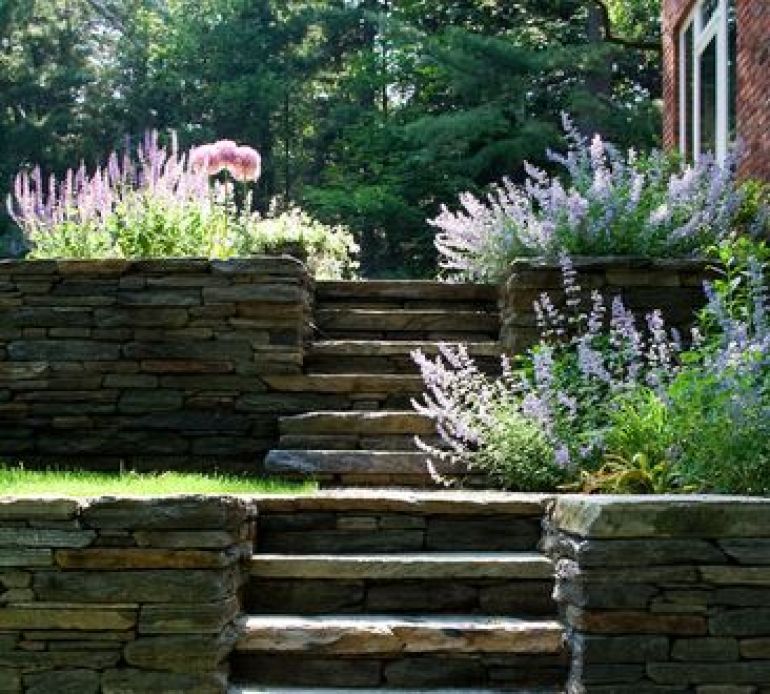

Is your backyard in need of a facelift? Sometimes the idea of organising your garden seems like an impossible task, the exclusive domain of those with too much time on their hands. Yet, there are lots of little things you can do which actually have a big impact on how your property comes across. Retaining walls are one of these options - oft forgotten or overlooked as a mere practicality, their presence can transform a landscape and offer a clean, fresh look for your home’s facade. So here’s everything you need to know about retaining walls but were too afraid to ask - or at least never thought to ask it!
What are retaining walls?
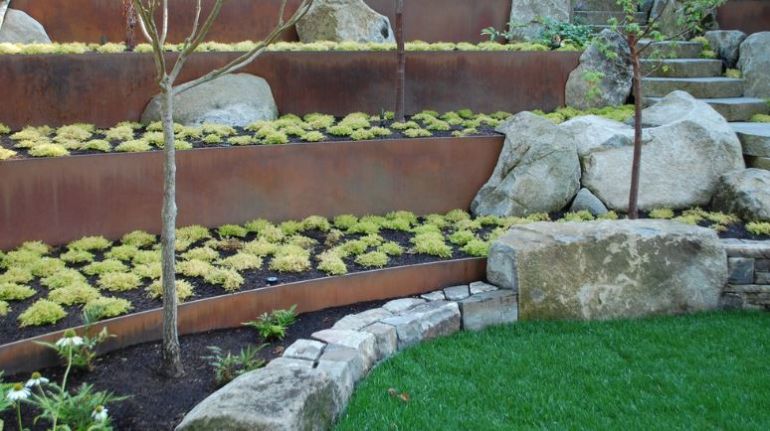
A retaining wall represents a very basic concept in engineering - the creation of an artificial slope. Manipulating and restraining the natural soil into distinct crevices, shapes and levels allows the landscape to adopt a specific purpose - for instance, as a road or a collective of farming patches. On residential properties, retaining walls are excellent for providing structure to an unruly garden - perhaps as accompaniments to pathways or staircases or as flowerbed-holding eye-candy around verandahs, patios and lawns.
Why choose a retaining wall?

Retaining walls serve both practical and aesthetic purposes. In terms of soil separation, you might choose to install a retaining wall around raised gardens (flowerbeds, vegetable patches and the like) to prevent unwanted proliferation and mixing of seedlings. Dug-out walkways will need to be protected from soil erosion, especially during rains, and water features may need to be framed from surrounding lawns. These walls can unite different elevations of soil in a neat and presentable way - the repetition of wall material creates a more refined and elegant look for your garden.
Which materials are available?
Brick
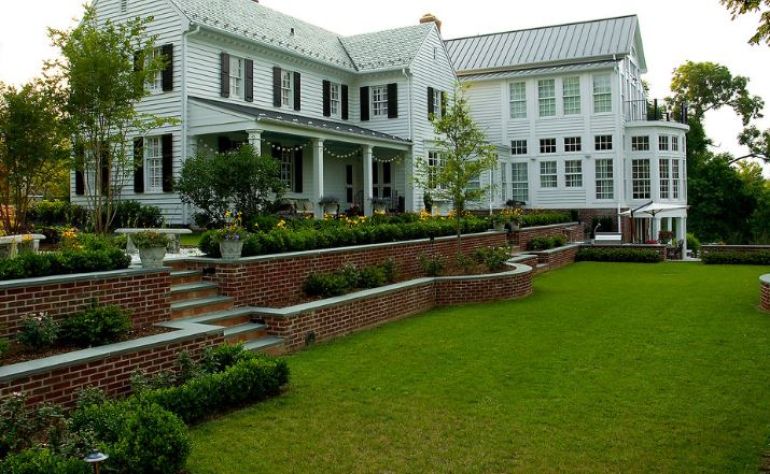
Brick retaining walls need a strong structural footing and lots of mortar to ensure they can support the weight of the soil. Although they can be more difficult to secure, bricks come in a variety of colours and sizes and are very flexible and forgiving if you want to construct smaller, curved walls - for instance, around garden beds and water features. Another benefit is that bricks can be more easily matched to existing outdoor pavers to keep your backyard neat and orderly.
Concrete
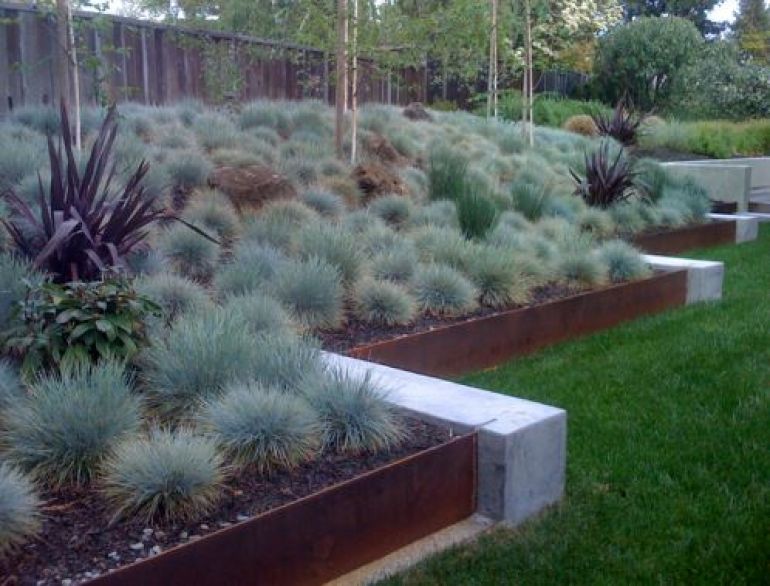
Poured concrete is not usually seen in residential properties - however, with careful design and delicate metalwork, it can look sleek, modern and sophisticated. The complex installation process warrants professional assistance.
Alternatively, one of the most popular materials for retaining walls are segmented concrete blocks. These require less extensive ground preparation, no mortar work and can usually be installed as a DIY job. Like bricks, they are flexible in creating unusual shapes and will allow you to replace damaged areas of the wall without needing to redo the wall in its entirety.
Stone

Natural stone retaining walls can be incredibly diverse, ranging from artistic rubble to evenly-cut slabs of slate and everything inbetween. They are principally valued for that rustic, elegant mood they bring to a property - unique and appealing, the rough texture of the stones seems more natural and earthy, perfect for a residential landscape.
Pebble styles are more time-consuming to erect and can require some kind of metal support. Flagstone slate walls are a simpler option and their efficient tessellation means that no proper drainage system is required. They also make a nice compromise between rugged attractiveness and stability!
Timber
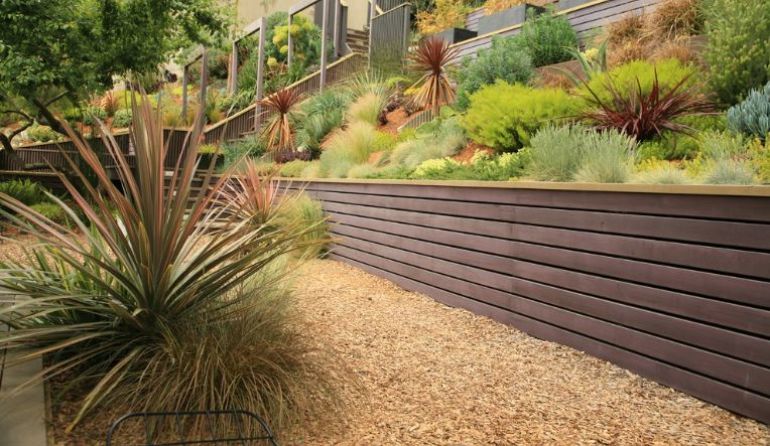
Timber retaining walls look fantastic around certain homes, especially older period styles and painted weatherboard. Wood blends in well with gardens and patios and has a warmer and more homely appearance compared to other choices. However, the shape of sleeper strips can be restrictive when constructing anything other than a straight, long wall. They are lack durability, being vulnerable to termite damage and in need of careful drainage systems and preservatives to prevent rotting.
What are the costs involved?
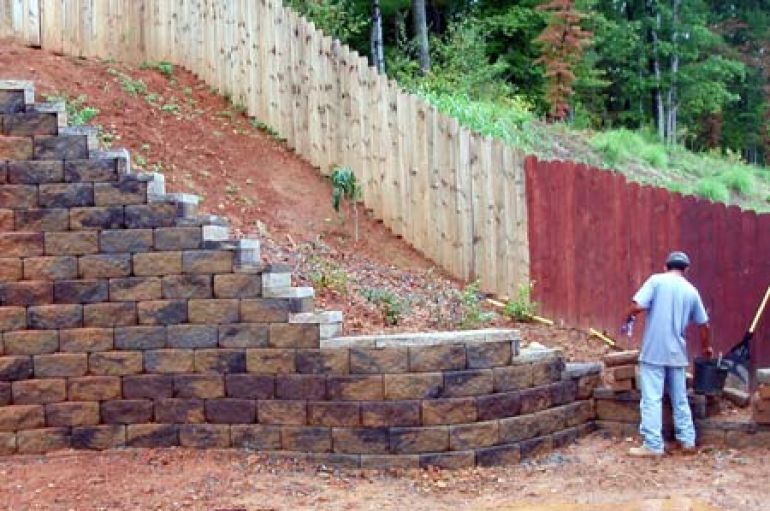
The cost of your retaining wall will naturally depend on the dimensions, material and labour you require. One significant thing is whether you are choosing to hire a contractor or try your own hand - and remember that materials which are more difficult to assemble will incur extra expense. Furthermore, the balance between quality and cost must be considered - although timber sleepers are cheaper than stone slabs, they also have a reduced lifespan. You can keep costs down by opting for specially-manufactured concrete “retaining wall blocks” with steel-reinforced posts, ideal for those wanted to try DIY.
It is difficult to estimate an average cost for retaining wall installation because things like soil condition and land curvature dramatically affect a quote. The cost of your overall project depends on these factors and the ways your material is suitable to your purposes - it is likely to be a significant investment.
What next?
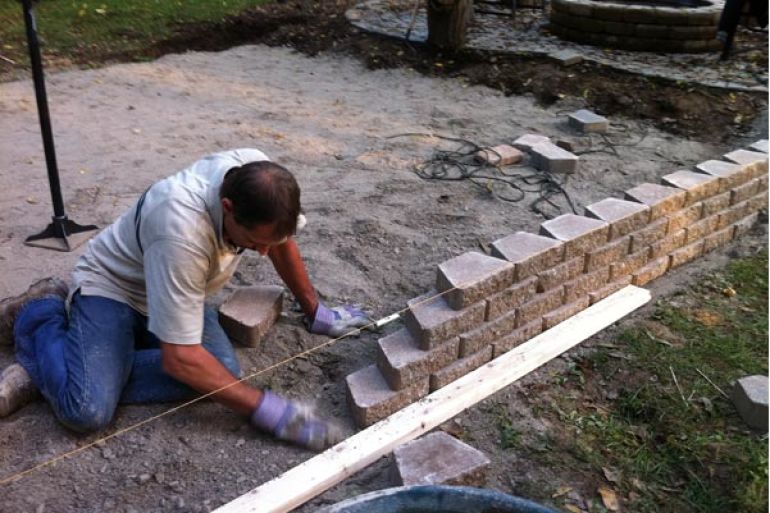
Depending on your needs and expectations, installing a retaining wall could be a simple weekend task or an extensive project managed by a landscaper, contractor or handyman. You can get quotes from landscapers now or head to your local hardware to discuss materials most suited to your circumstances. Even if you’re planning to DIY, it’s always a good idea to seek professional advice about how feasible your design is - you might need to find out about how soil type and density relates to your materials and drainage system, the best ways to position your soil levels, the use of inter-block support and adhesives, providing sufficient structural support for the kind of wall you envisage, and what kind of communication you’ll need to have with local government.
Lots to think about - and once you’ve decided on a material, there’ll be plenty more to understand in regards to structure and installation. On the plus side, retaining walls can be surprisingly fun - and certainly always attractive - additions to your home and garden.

